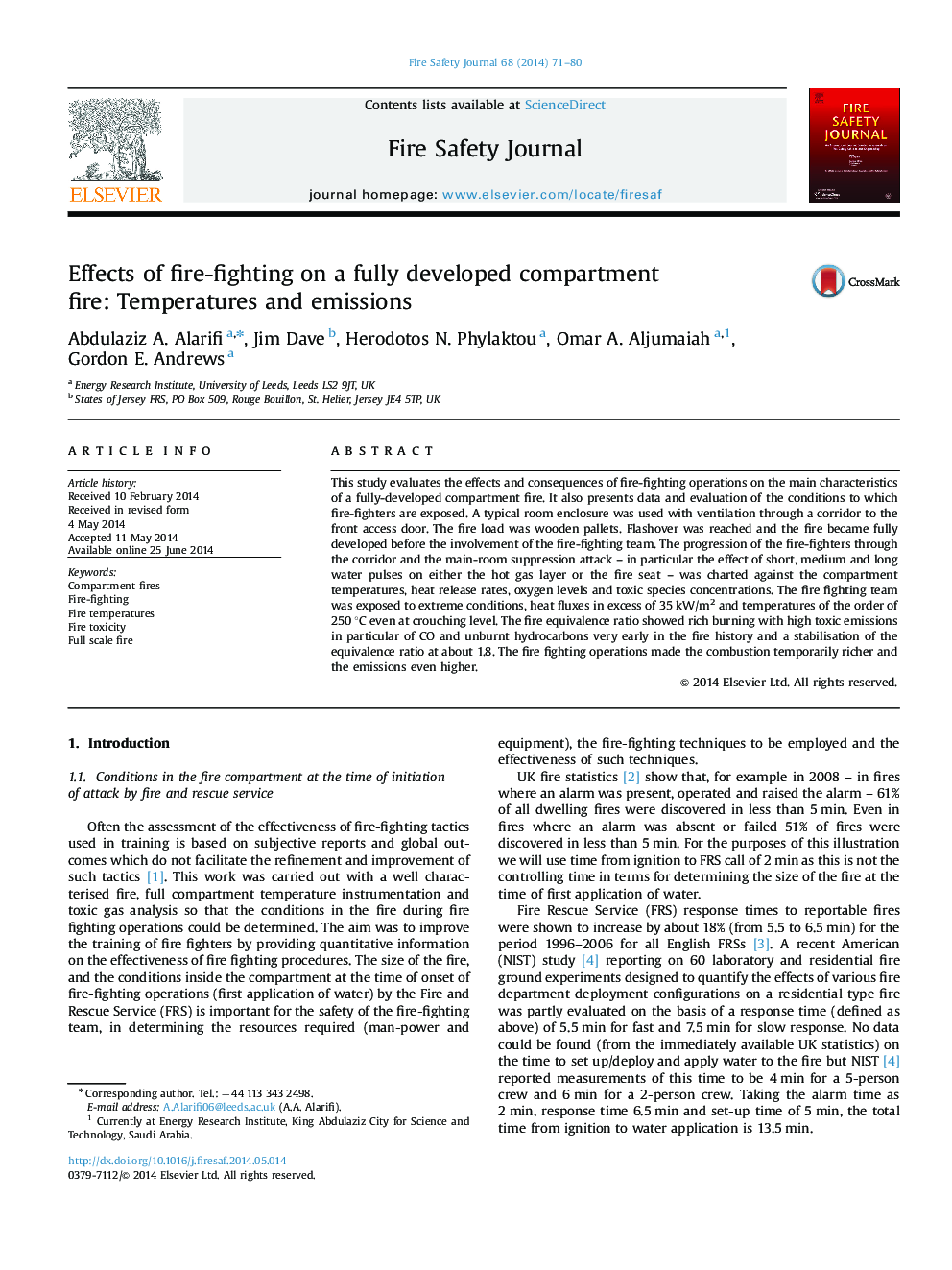| Article ID | Journal | Published Year | Pages | File Type |
|---|---|---|---|---|
| 269824 | Fire Safety Journal | 2014 | 10 Pages |
•Full-scale, fully developed compartment fire extinguished by fire-fighters.•Temperatures and toxic emissions were monitored.•Critical thermal conditions experienced by fully protected team – safety margins of seconds.•CO levels at about 7%, temporarily raised to 10% during fire-fighting.•High unburnt hydrocarbons (3%) and combustion inefficiencies (up to 35%).
This study evaluates the effects and consequences of fire-fighting operations on the main characteristics of a fully-developed compartment fire. It also presents data and evaluation of the conditions to which fire-fighters are exposed. A typical room enclosure was used with ventilation through a corridor to the front access door. The fire load was wooden pallets. Flashover was reached and the fire became fully developed before the involvement of the fire-fighting team. The progression of the fire-fighters through the corridor and the main-room suppression attack – in particular the effect of short, medium and long water pulses on either the hot gas layer or the fire seat – was charted against the compartment temperatures, heat release rates, oxygen levels and toxic species concentrations. The fire fighting team was exposed to extreme conditions, heat fluxes in excess of 35 kW/m2 and temperatures of the order of 250 °C even at crouching level. The fire equivalence ratio showed rich burning with high toxic emissions in particular of CO and unburnt hydrocarbons very early in the fire history and a stabilisation of the equivalence ratio at about 1.8. The fire fighting operations made the combustion temporarily richer and the emissions even higher.
